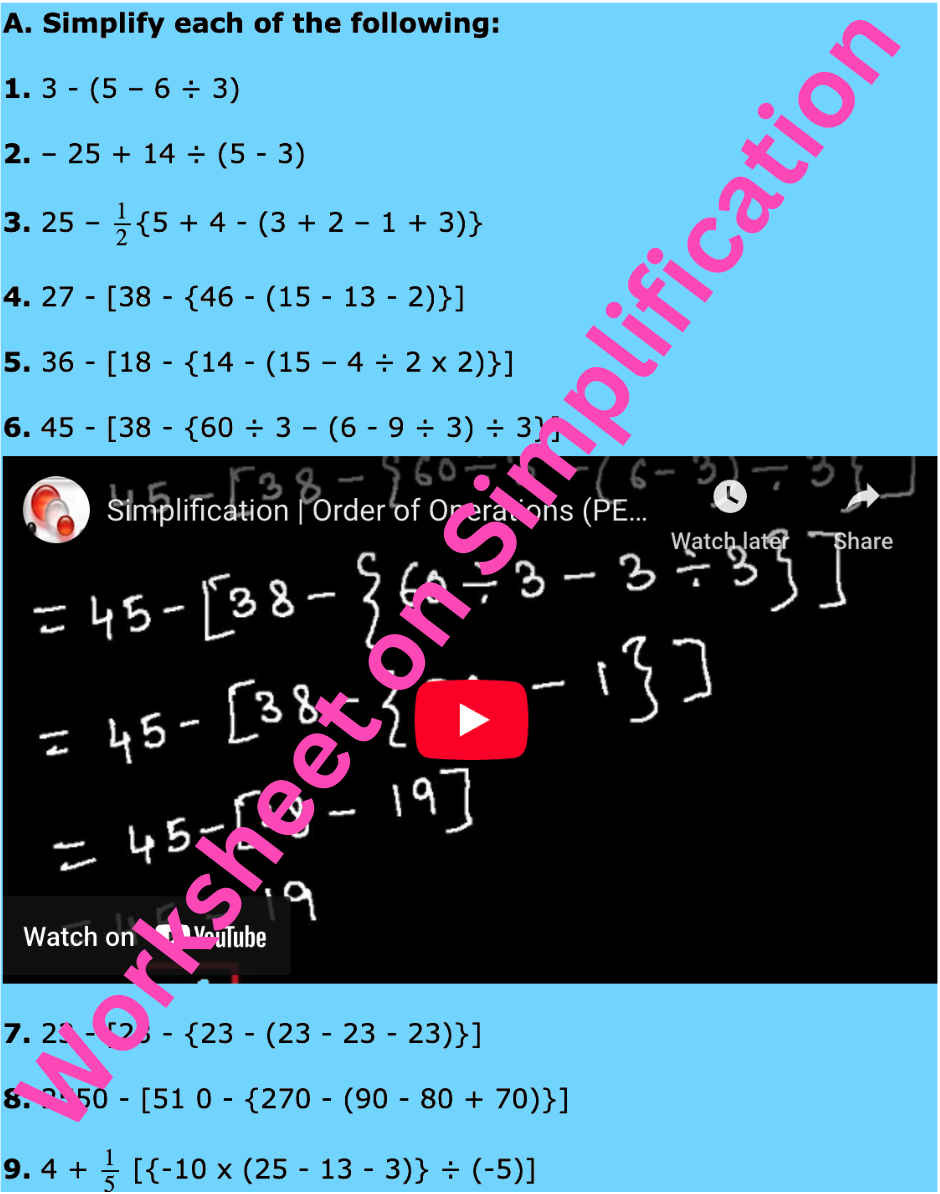General Equation of Second Degree Represents a Circle
We will learn how the general equation of second degree represents a circle.
General second degree equation in x and y is
ax2 + 2hxy + by2 + 2gx + 2fy + C = 0, where a, h, b, g, f and c are constants.
If a = b(≠ 0 ) and h = 0, then the above equation becomes
ax2 + ay2 + 2gx + 2fy + c = 0
⇒ x2 + y2 + 2 ∙ ga x + 2 ∙ fa y + ca = 0, (Since, a ≠ 0)
⇒ x2 + 2 ∙ x ∙ ga + g2a2 + y2 + 2.y .fa + f2a2 = g2a2 + f2a2 - ca
⇒ (x + ga)2 + (y + fa)2 = (1a√g2+f2−ca)2
Which represents the
equation of a circle having centre at (-ga, -fa) and radius = 1a√g2+f2−ca
Therefore, the general second degree equation in x and y represents a circle if coefficient of x2 (i.e., a) = coefficient of y2 (i.e., b) and coefficient of xy (i.e., h) = 0.
Note: On comparing the general equation x2 + y2 + 2gx + 2fy + c = 0 of a circle with the general equation of second degree ax2 + 2hxy + by2 + 2gx + 2fy + C = 0 we find that it represents a circle if a = b i.e., coefficient of x2 = coefficient of y2 and h = 0 i.e., coefficient of xy.
The equation ax2 + ay2 + 2gx + 2fy + c = 0, a ≠ 0 also represents a circle.
This equation can be written as
x2 + y2 + 2gax + 2fay + ca = 0
The coordinates of the centre are (-ga, -fa) and radius 1a√g2+f2−ca.
Special features of the general equation ax2 + 2hxy + by2 + 2gx + 2fy + C = 0 of the circle are:
(i) It is a quadratic equation in both x and y.
(ii) Coefficient of x2 = Coefficient of y2. In solving problems it is advisable to keep the coefficient of x2 and y2 unity.
(iii) There is no term containing xy i.e., the coefficient of xy is zero.
(iv) It contains three arbitrary constants viz. g, f and c.
● The Circle
- Definition of Circle
- Equation of a Circle
- General Form of the Equation of a Circle
- General Equation of Second Degree Represents a Circle
- Centre of the Circle Coincides with the Origin
- Circle Passes through the Origin
- Circle Touches x-axis
- Circle Touches y-axis
- Circle Touches both x-axis and y-axis
- Centre of the Circle on x-axis
- Centre of the Circle on y-axis
- Circle Passes through the Origin and Centre Lies on x-axis
- Circle Passes through the Origin and Centre Lies on y-axis
- Equation of a Circle when Line Segment Joining Two Given Points is a Diameter
- Equations of Concentric Circles
- Circle Passing Through Three Given Points
- Circle Through the Intersection of Two Circles
- Equation of the Common Chord of Two Circles
- Position of a Point with Respect to a Circle
- Intercepts on the Axes made by a Circle
- Circle Formulae
- Problems on Circle
11 and 12 Grade Math
From General Equation of Second Degree Represents a Circle to HOME PAGE
Didn't find what you were looking for? Or want to know more information about Math Only Math. Use this Google Search to find what you need.
Recent Articles
-
Counting Numbers from 1 to 50 | Match the Number | Missing Numbers
Apr 04, 25 03:46 PM
In counting numbers from 1 to 50, recognize the numbers, count and then join the numbers in the correct number order. Here we mainly need eye-hand coordination to draw the picture and maintain the num -
Counting Eleven to Twenty with Numbers and Words |Numbers from 11 - 20
Apr 04, 25 03:21 PM
Counting eleven to twenty with numbers and words are explained below. One ten and one more is eleven. Eleven comes after ten. One ten and two more is twelve. Twelve comes after eleven. -
5th Grade BODMAS Rule Worksheet | PEMDAS | Order of operations|Answers
Apr 03, 25 03:11 PM
In 5th Grade BODMAS Rule Worksheet you will get different types of problems on mathematical expressions involving different operations, mathematical expression with 'brackets' and 'of' and simplifying… -
Worksheet on Simplification | Simplify Expressions | BODMAS Questions
Apr 03, 25 02:58 PM
In worksheet on simplification, the questions are based in order to simplify expressions involving more than one bracket by using the steps of removal of brackets. This exercise sheet -
Divisible by 2 Video |Test of Divisibility by 2 Trick| Rules| Examples
Apr 03, 25 10:25 AM
A number is divisible by 2 if the digit at unit place is either 0 or multiple of 2. So a number is divisible by 2 if digit at its units place is 0, 2, 4, 6 or 8.





New! Comments
Have your say about what you just read! Leave me a comment in the box below. Ask a Question or Answer a Question.